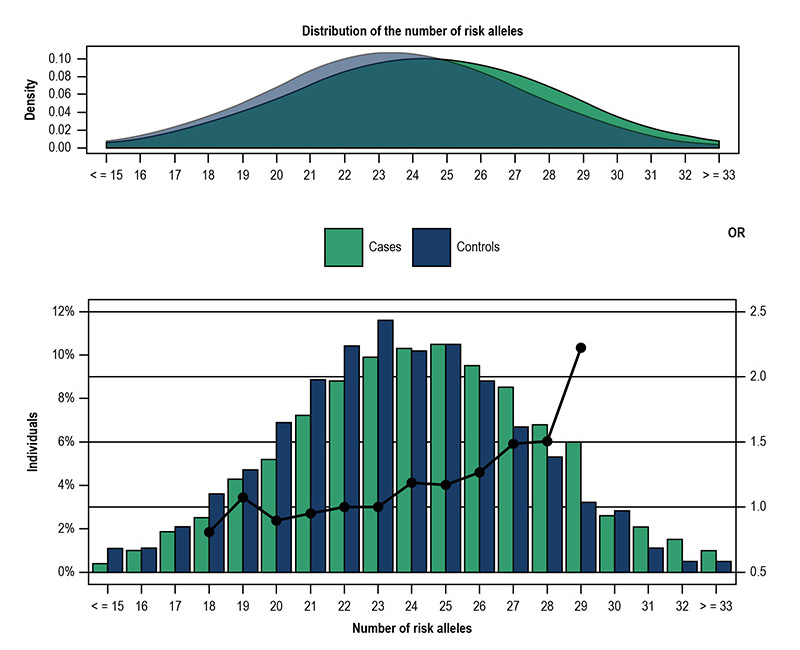Volume 111, Nº 1, Julho 2018
DOI: http://www.dx.doi.org/10.5935/abc.20180107
ORIGINAL ARTICLE
Genetic Risk Analysis of Coronary Artery Disease in a Populationbased Study in Portugal, Using a Genetic Risk Score of 31 Variants
Andreia Pereira
Maria Isabel Mendonça
Sofia Borges
Sónia Freitas
Eva Henriques
Mariana Rodrigues
Ana Isabel Freitas
Ana Célia Sousa
António Brehm
Roberto Palma dos Reis

Figure 1 – Distribution of the number of risk alleles by cases and controls. A logistic regression model was used to determine the coronary artery disease risk by the number of risk alleles compared to the number of reference alleles (23 alleles, in relation to the median value of the controls). Dots: regression analysis odds ratio for coronary artery disease.
Abstract
Background: Genetic risk score can quantify individual’s predisposition to coronary artery disease; however, its usefulness as an independent risk predictor remains inconclusive.
Objective: To evaluate the incremental predictive value of a genetic risk score to traditional risk factors associated with coronary disease.
Methods: Thirty-three genetic variants previously associated with coronary disease were analyzed in a case-control population with 2,888 individuals. A multiplicative genetic risk score was calculated and then divided into quartiles, with the 1st quartile as the reference class. Coronary risk was determined by logistic regression analysis. Then, a second logistic regression was performed with traditional risk factors and the last quartile of the genetic risk score. Based on this model, two ROC curves were constructed with and without the genetic score and compared by the Delong test. Statistical significance was considered when p values were less than 0.05.
Results: The last quartile of the multiplicative genetic risk score revealed a significant increase in coronary artery disease risk (OR = 2.588; 95% CI: 2.090-3.204; p < 0.0001). The ROC curve based on traditional risk factors estimated an AUC of 0.72, which increased to 0.74 when the genetic risk score was added, revealing a better fit of the model (p < 0.0001).
Conclusions: In conclusion, a multilocus genetic risk score was associated with an increased risk for coronary disease in our population. The usual model of traditional risk factors can be improved by incorporating genetic data. (Arq Bras Cardiol. 2018; 111(1):50-61)
Keywords: Coronary Artery Disease / history; Coronary Artery Disease / morbidity; Mortality; Polymorphism, Genetic; Epidemiology; Risk Factors.















